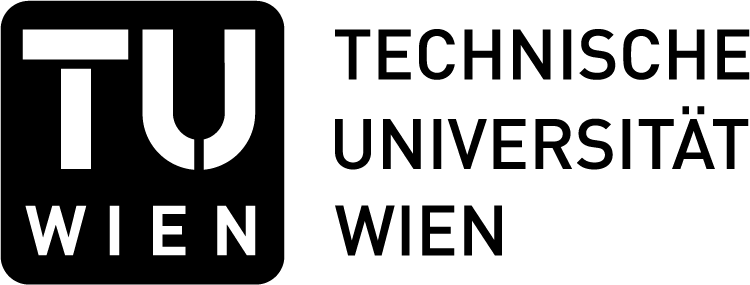OPC4Factory
|
Description:
Deutsch:
Flexibel automatisierte Fertigungszellen sind üblicherweise vorkonfigurierte Systeme, die als Standard-Lösungen für bestimmte Bearbeitungsfälle „von der Stange“ angeboten werden und hinsichtlich ihrer Bearbeitungsmöglichkeiten bzw. ihres Automatisierungsgrades nicht verändert werden können. Die mangelnde Rekonfigurierbarkeit führt oft zu einer geringen Auslastung der Zelle bzw. ihrer Komponenten. Dies trifft wegen der dort anzutreffenden kleinen oder stark variierenden Losgrößen insbesondere auf KMUs zu. Diese Tatsache stellt oft ein Hindernis für die Automatisierung von Bearbeitungsprozessen bei KMUs dar, obwohl die Preise für Industrieroboter seit 1990 um fast zwei Drittel gefallen sind. Für KMUs ist auch die rasche Umstellung einer Zelle auf neue Produkte viel wichtiger als z.B. kurze Zykluszeiten. Um dies sicherzustellen, müssen die Programmierung der Zelle und die Integration neuer Komponenten erheblich vereinfacht werden.
Maschine, Roboter und Peripherie auf einfache Weise steuerungstechnisch zu verknüpfen ist ein alter Wunsch. Dazu werden aber entsprechende Kommunikationswerkzeuge und Schnittstellen benötigt. Sehr oft ist der Informationsaustausch in Fertigungszellen auch heute noch auf die Verwendung einfacher digitaler I/Os beschränkt. Die erforderlichen Signale wie z.B. für die Ansteuerung von Arbeitsraumtüren und Spannfutter müssen einzeln konfiguriert und verknüpft werden. Oft müssen im NC-Programm Steuerbefehle (M-Befehle) für die Ansteuerung oder Abfrage der I/Os herangezogen werden. Die Rekonfiguration einer Zelle (z.B. Ersatz einer Automatisierungskomponente durch eine andere) ist aufwendig und erfordert Expertenkenntnisse.
Ziel dieses Projekts ist die Lösung des Schnittstellenproblems durch den Einsatz von OPC UA in den Roboter- und Maschinensteuerungen, die dem angeschlossenen Zellrechner alle von den Automatisierungskomponenten angebotenen Funktionen und Informationen derart zur Verfügung stellen, dass die Orchestrierung der für die Ausführung eines Jobs erforderlichen Operationen sowie der beteiligten Komponenten einfach konfiguriert und ausgeführt werden kann.
OPC UA Server und ihre Informationsmodelle repräsentieren alle für die Automatisierungs-aufgaben erforderlichen Komponenten der angeschlossenen Maschinen und Roboter (Ladetüren, Spannmittel, Werkzeuge, NC-Programme etc.) mit ihren Attributen, Ereignissen und Methoden. Die Kommunikation auf dieser Ebene erfordert keine Echtzeitfähigkeit, da abgewickelt werden.
Ausgehend von einem für eine Roboter-Fertigungszelle zu entwickelnden Anforderungsmodell sollen die Informationsmodelle für die OPC UA Server abgeleitet werden. Daraus sollen exemplarisch OPC UA Server für eine Werkzeugmaschine, einen Roboter und die Fertigungszelle selbst entwickelt werden. Um die zu entwickelnden Konzepte zu testen und die Ergebnisse darstellen zu können, soll eine einfache Demonstrationsplattform bestehend aus einer Werkzeugmaschine, einem Industrieroboter und der erforderlichen Peripherie aus bereits vorhandenen Komponenten aufgebaut werden.
English:
Flexible automated manufacturing cells usually are preconfigured systems offered as standard solutions for distinct application scenarios. In most cases they are not intended to be modified by the user when the application changes. This lack of reconfigurability often leads to a reduced rate of use of the cell and its components which especially applies to SMEs due to the very small or highly variable batch sizes. In many cases, this circumstance is an economic obstacle against automated manufacturing processes, although prices for industrial robots for example decreased for one third since 1990. For SMEs, fast adaptation of manufacturing cells is of much higher importance than short cycle times. To ensure that, reprogramming cell equipment and the integration of new components must be significantly facilitated.
The integration of machines, robots and peripheral equipment relies on proper interfaces. In state-of-the-art solutions data exchange between components is realised based on digital I/O ports. The desired signals like for controlling the workspace door or the chuck must be individually configured and linked. Often, in an NC program control instructions (M instructions) are used to drive or request the state of digital I/O ports. For this reason, the reconfiguration of a cell due to the exchange of a single component results in high effort and requires programming skills.
The project goal is to develop semantic OPC UA-based interfaces for the robot and machine controllers. These interfaces are provided by OPC UA servers integrated in the respective components. This way, all the necessary information and the operations provided by the cell components (loading doors, chucks, tools, NC programs etc.) are exposed to the cell controller acting as an OPC UA client. This is achieved in a unified and abstract manner. The new interface concept shall lead to a change in the (re-)configuration workflow, replacing programming by parameterizing. The configuration required for a job execution and the orchestration of equipment shall become substantially simplified.
The proposed OPC UA servers expose the parts of the cell components by the information models instantiated in the address space of the servers. Communication on this level does not require real-time capabilities since control jobs with real-time requirements are executed on the robot and machine controllers.
The OPC UA information models shall be derived from a domain model representing a manufacturing cell consisting of a robot, an NC-controlled machine tool and a cell controller. In order to evaluate the concepts developed within this project a simple demonstrator manufacturing cell shall be finally set up which integrates the OPC UA servers. This way, configuration of real-life manufacturing environment can be tested using the proposed new concepts.

